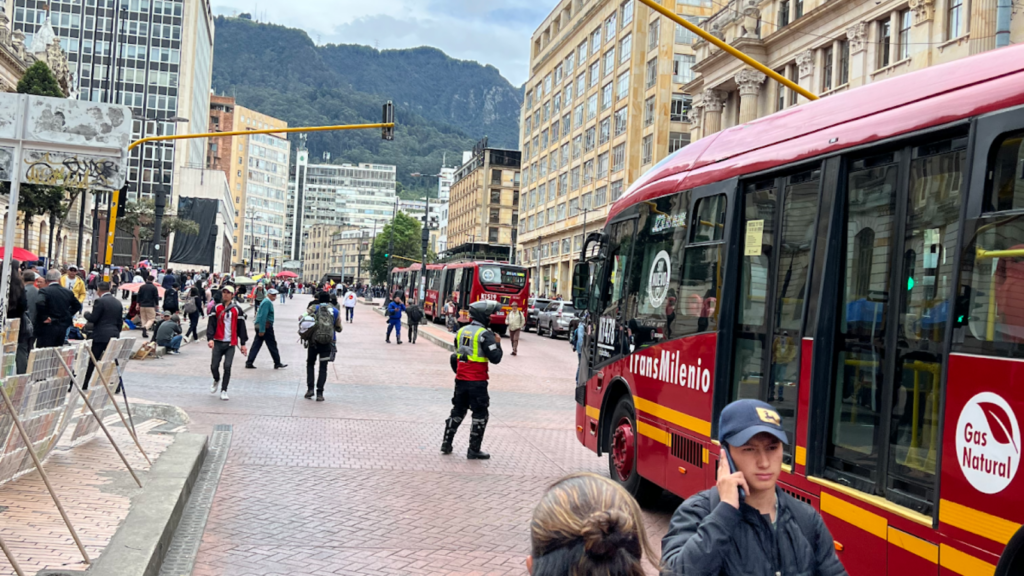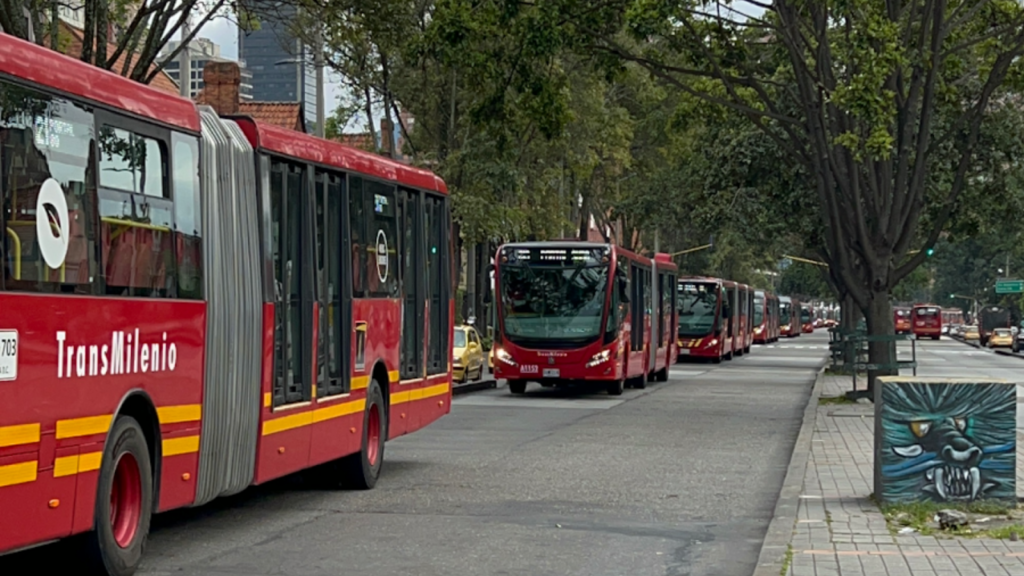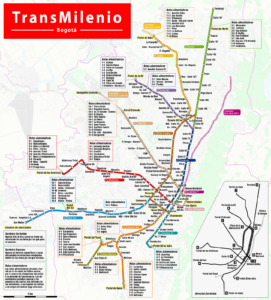
Think creatively, go bold, iterate time and again on transit

Transit serves as the sustainable mobility lifeline for people in many communities around the world. Transit also serves as the great equalizer, transporting white collar workers, essential workers, tourists, as well as youth and seniors. Yet in the US, transit is still deemed over-resourced and undeserving. Traveling on Bogotá’s TransMilenio highlighted what matters most in transit service delivery: a willingness to think creatively in order to improve service.

Serving billions around the rapidly urbanizing world, transit is a mobility lifeline lifting people out of poverty and connecting them to jobs and services in their community. In many transit conversations, major cities like London and Tokyo are held in high regard for having stellar transit operations and infrastructure. What many decision makers in the United States take from comparing such examples is robust, permanently fixed, expensive infrastructure in transit to attract ridership, calling for the investment in the shiny new rail or streetcar line in their community.
Folks in the United States often assume that the transit systems are so good in other major cities because those cities are wealthy and come from the developed world. We would do well to consider how well cities in developing countries, like Colombia, are doing in providing high quality transit before letting ourselves off the hook. If we peel back the layers of any highly regarded transit system, we’ll see that they are seeded in decades of trial and error, flexibility, and low cost solutions improving frequency and reliability, before doubling down on capital intensive investments that many US decision makers look to replicate.
If leaders in the US want to have a serious conversation on how to evolve public transportation into the world class mobility option that is needed and deserved by all, then they should take a field trip down to Bogotá, Colombia. Within a week, I had a chance to be immersed with TransMilenio, a living lab of public transit innovation and evolution for world class transit that stands miles above and beyond many US transit systems.
What is TransMilenio?

Prior to 2000, Bogotá was a city of major congestion and very unreliable and incongruent transit mobility options. Transit that was available in the metropolitan area of 7 million people consisted of private on-demand shuttles and buses (informally creating fixed routes where there was regular demand for service). Those uncoordinated shuttles were subject to irregular schedules due to being stuck in traffic with all other vehicles. Planning in the city in the 1980s and 1990s called for the creation of wider boulevards, elevated highways to increase vehicle throughput, and construction of a heavy rail line.
However, in the 1990s, Bogotá mayor Enrique Peñalosa changed the conversation on transportation in the Colombian capital, proposing and building an integrated transit system modeled after Curitiba, Brasil, which relied on bus rapid transit (BRT), a trinary road system (system of one-way circulating streets surrounding a smaller footprint two-way street that has exclusive bus lanes), and transit-oriented development. The TransMilenio project was to be larger in scale to Curitiba’s system, expansive in reach in the metropolitan area. It would enhance mobility reliability for all users to get to jobs and community services, but also accomplish this goal at a fraction of the cost of past proposals of highways and heavy rail.

Since the first TransMilenio trunk line went live in 2002, the system has looked at ways to optimize service delivery to ensure people can reliably use the system and expect buses to arrive at stops every 3-5 minutes. Changes have included BRT serving all stops along the route and creating a local versus express route system, which ultimately evolved into a local paired with a tiered express route system (with different express routes serving different stops along the route). Every time a new trunk segment was introduced to the system, TransMilenio would reoptimize the system to integrate the new trunk route, while still preserving frequency and reliability. As of 2022, TransMilenio as originally planned is nearly built out, with final trunk lines finishing design and starting construction.
Today, the TransMilenio system covers 12 major trunk routes served by nearly 1800 buses (each can carry 300 people) and 152 stations. It includes 71+ miles with 3-5 minute headways, and it’s the foundation of the metro area’s tiered bus network. The TransMilenio system, carrying between 2.5-3 million daily riders, exemplifies the best of bus rapid transit, to include but not limited to dedicated lanes, off-board fare collection, a common fare structure ($2950 COP = $0.60 USD as of this writing), and accessible stations.
Redefining world class transit through iteration
To exemplify a stellar transit system, decision makers have to engage in a conversation and take steps in implementing seamless, integrated, and simplified mobility that elevates moving people. As Bogotá’s system enters its second decade of service, it is iterating on its trials and errors to better serve its customers and pursue its mission.
TransMilenio has heralded several successes as well as shortcomings through its operations and evolution. The system today is moving people through the region 32 percent faster than other modes and has reduced greenhouse gas emissions in the city by 40 percent. Safety in and along TransMilenio has also improved, with significant reductions (80-90 percent) in road injuries and fatalities attributed to the system. However, TransMilenio leadership have expressed regret in not integrating transit signal priority in earlier routes to improve reliability. Additionally, accessibility remains a hurdle for the tiered transit system that feeds into TransMilenio, particularly for customers with mobility impairments boarding buses and getting to and from bus stops. This accessibility challenge is compounded by the initial lack of dedicated bus lanes for feeder buses—this system has only started to leverage painted transit priority lanes during peak periods to access TransMilenio stations more reliably.
As TransMilenio enters its third decade of operations, the agency will need to confront these challenges to maintain reliable service, before continuing to embark on future expansion plans, which includes the initial construction of the Bogotá metrorail system.
The bottom line: If at first you don’t succeed, try try again!
Decision makers at transit agencies, local governments, state DOTs, as well as legislators both at state houses and Congress, need to take a hard look at the transit paradigm in the US. There has been quite a prevailing and concerning mindset that public transit is a costly endeavor that yields minimal benefits. As such, the paradigm for public transit has been to provide the bare minimum for essential community service, if at all. Transit service has been considered as secondary to auto-centric transportation policy, investment, and operations in the US. The challenge here is changing the decision maker mindset that transit investments are a quick agent solution, akin to a weight loss miracle that happens overnight, and deemed an immediate failure when immediate results for transit don’t emerge.
To move the needle forward for transit in the US, decision makers should look to the TransMilenio example, where Mayor Peñalosa laid out a long-term vision and strategy to achieve a sustainable and reliable transit system that can connect people to everywhere they need to go (and not just the peak job commute as is currently the US transit system modus operandi). Transit evolution in the US needs to start with a bold rethink of what transit is for and how it can benefit communities. Only then should we lay out the initial investments (only reaching for capital intensive investments after proven sustainable transit growth), and start iterating towards our achievable goals.



